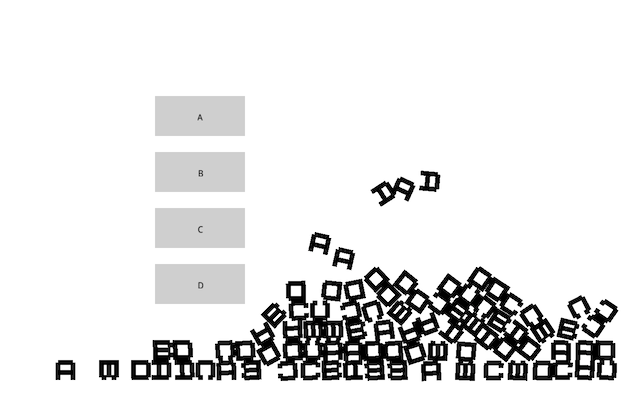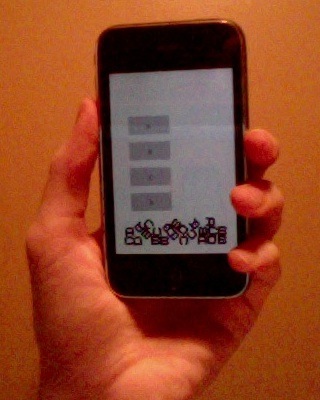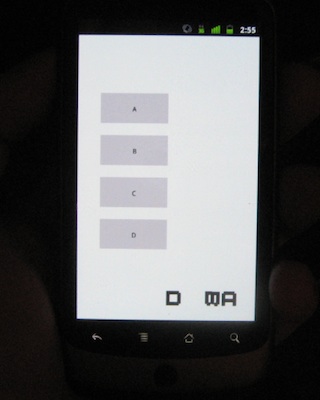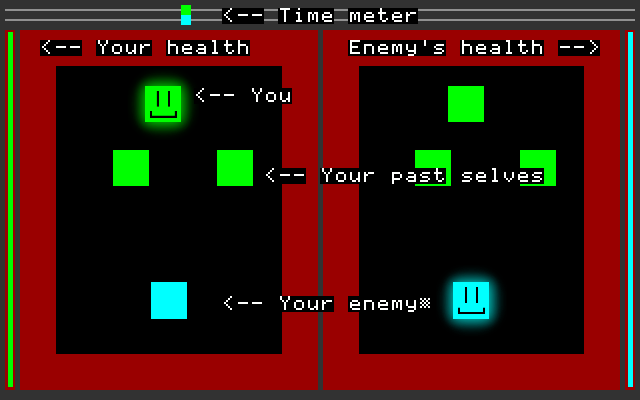CLICK HERE TO JUMP TO THE PRETTY COLOR-CODED FULL RESULTS
This explanation will look a lot like last year’s, but:
Every year since 2004 I’ve been hosting this Game of the Year poll for the users of some forums I read. There are a lot of GOTY polls out there, but this one I think is kind of special. Most polls, you’re given a list of four or five options and you’re asked to pick the one you liked best. This poll, people are given a list of a couple of hundred options, consisting of every new game released in the previous year– and asked to rate their top ten or twenty.
This does a few interesting things. First off, we get to see all the information about what people’s second, third etc choices are. Second off, because the second, third etc choices count, people are more likely to vote for the game they want to win, rather than the game they think is likely to win– they’re less likely to engage in “strategic voting”. Finally, because we have all this information, we’re actually able to provide somewhat reasonable rankings for something like the top hundred or so games of last year.
The full results– showing the exact number of voters who ranked each game first, second, third place etc– can be found here. In the meantime, the final results were:
- Batman: Arkham Asylum (7772) *** GAME OF THE YEAR ***
- Dragon Age: Origins (7019)
- Borderlands (5579)
- Call of Duty: Modern Warfare 2 (4458)
- Left 4 Dead 2 (4295)
- Assassin’s Creed II (4205)
- Uncharted 2: Among Thieves (3858)
- Torchlight (3792)
- New Super Mario Bros. Wii (3386)
- Resident Evil 5 (2941)
- Street Fighter IV (2576)
- Shadow Complex (2460)
- Demon’s Souls (2342)
- Halo 3: ODST (2104)
- Brütal Legend (2008)
- The Beatles: Rock Band (1991)
- Infamous (1844)
- Plants vs. Zombies (1773)
- Scribblenauts (1752)
- Prototype (1720)
The numbers in parentheses are the final scores each game got under the poll’s ranking system. Thanks if you voted, and some more elaborate analysis of the results (plus an explanation of the scores) can be found below.
NOTEWORTHY WINNERS
- GOTY 2009:
#1, Batman: Arkham Asylum
- Top-ranked PS3 Exclusive:
#7, Uncharted 2: Among Thieves
- Top-ranked PC Exclusive:
#8, Torchlight
- Top-ranked Wii Exclusive:
#9, New Super Mario Bros. Wii
- Top-ranked 360 Exclusive:
#12, Shadow Complex
- Top-ranked DS Exclusive:
#19, Scribblenauts
- Top-ranked PSP Exclusive:
#46, Dissidia: Final Fantasy
- Top-ranked iPhone Exclusive:
#56, Canabalt
- Best RPG:
#2, Dragon Age: Origins
- Best FPS:
#3, Borderlands
- Best Game Only Available Through A Console Download Service:
#12, Shadow Complex
- Best “Indie” Game? (I’m not even sure I know what that word means.):
#18, Plants vs Zombies
NOTEWORTHY LOSERS
- Best game of 2009 which somehow nobody considered to be their #1 pick: #30, Punch-Out!!
- Worst game of 2009 that at least one person considered their #1 pick: #248, Harvest Moon: Animal Parade (Only one person voted for this at all)
- Worst game of 2009: #284, Mario & Sonic at the Olympic Winter Games (Only one person voted for this; it was their #20 pick)
There were 17 games on the nominations list no one voted for at all. Also, FIFA 10– which was left off the nominations list by complete accident– probably deserves some kind of special “moral victory” award for the sheer number of people who were upset about its absence.
ALTERNATE SCORING METHODS
The rankings listed above are based on what was originally intended to be an approximation of Condorcet voting, but which I’m told is actually closer to the Borda count. In my Borda-ish voting method, each vote cast for a game gives that game a certain number of points. If someone ranks a game #1, that game gets 20 points. If they rank it #2, the game gets 19 points. If they rank it #3 the game gets 18 points… and so on. I have a script that checks a couple of alternate ways of ranking the same data, though.
For example, if we rank games only by the number of first post votes they got, we get a wildly different list, with the most obvious difference being Batman and Dragon Age swapping places:
First Past the Post
- Dragon Age: Origins (134)
- Batman: Arkham Asylum (119)
- Uncharted 2: Among Thieves (111)
- Borderlands (58)
- New Super Mario Bros. Wii (45)
- Left 4 Dead 2 (45)
- Assassin’s Creed II (41)
- Demon’s Souls (41)
- Call of Duty: Modern Warfare 2 (32)
- Street Fighter IV (25)
- Brütal Legend (14)
- The Beatles: Rock Band (13)
- Shadow Complex (12)
- Torchlight (12)
- Resident Evil 5 (11)
- Halo 3: ODST (10)
- Muramasa: The Demon Blade (9)
- Warhammer 40,000: Dawn of War II (8)
- Red Faction: Guerrilla (7)
- Forza Motorsport 3 (7)
- Infamous (7)
- Little King’s Story (7)
- Machinarium (7)
Most years when I look at the first-past-the-post list a “cult” game usually emerges that received very few overall votes, but where an overwhelming percentage of those votes were #1 votes; this year there was no obvious leader in the “cult” category, although the jump in ranking for Demon’s Souls seems pretty significant, and Murasama (which jumps from #37 to #17) and Machinarium and Little King’s Story (which jump from #40 and #48 to a five-way tie for 19th place) seem worth mentioning.
I also did two more ways of sorting the rankings: an “approval” vote, where nothing is counted except the number of votes a game received (i.e. a first-place and a twentieth-place ranking count the same– all the matters is if the game was on someone’s list); and an instant runoff vote. Your eyes are probably starting to glaze over at this point, so I bolded the places where these two votes differ from the normal rankings:
Approval
- Batman: Arkham Asylum (438)
- Dragon Age: Origins (395)
- Borderlands (347)
- Call of Duty: Modern Warfare 2 (281)
- Left 4 Dead 2 (265)
- Torchlight (255)
- Assassin’s Creed II (247)
- Resident Evil 5 (215)
- New Super Mario Bros. Wii (213)
- Uncharted 2: Among Thieves (210)
- Shadow Complex (175)
- Street Fighter IV (172)
- Brütal Legend (148)
- Halo 3: ODST (146)
- Demon’s Souls (143)
- Scribblenauts (141)
- The Beatles: Rock Band (133)
- Prototype (131)
- Plants vs. Zombies (130)
- Infamous (126)
|
IRV
- Batman: Arkham Asylum (438)
- Dragon Age: Origins (395)
- Borderlands (347)
- Left 4 Dead 2 (265)
- Torchlight (255)
- Uncharted 2: Among Thieves (210)
- Assassin’s Creed II (247)
- Call of Duty: Modern Warfare 2 (281)
- New Super Mario Bros. Wii (213)
- Resident Evil 5 (215)
- Street Fighter IV (172)
- Shadow Complex (175)
- Demon’s Souls (143)
- Brütal Legend (148)
- Halo 3: ODST (146)
- Scribblenauts (141)
- Infamous (126)
- The Beatles: Rock Band (133)
- Prototype (131)
- Plants vs. Zombies (130)
|
FINALLY: PER-FORUM BREAKDOWNS
As mentioned before, this poll mostly exists for a handful of video game forums where some people I know post. Since a couple years ago when I started posting the results on this blog, I’ve tried to actually run some extra results, in each case counting only those voters who– as far as one could tell from looking at the logs– had come to the poll from one particular forum or other.
So, here you have it– these numbers aren’t totally accurate because my logging method is not entirely trustworthy, but here’s an approximate by-forum breakdown of these results. Links go to color-coded full listings.
Penny Arcade Forums (767 voters)
- Batman: Arkham Asylum
- Dragon Age: Origins
- Borderlands
- Call of Duty: Modern Warfare 2
- Left 4 Dead 2
- Assassin’s Creed II
- Uncharted 2: Among Thieves
- Torchlight
- New Super Mario Bros. Wii
- Resident Evil 5
- Street Fighter IV
- Shadow Complex
- Demon’s Souls
- The Beatles: Rock Band
- Halo 3: ODST
- Brütal Legend
- Infamous
- Prototype
- Scribblenauts
- Warhammer 40,000: Dawn of War II
|
Tigsource.com (48 voters)
- Machinarium
- Star Guard
- Scribblenauts
- Canabalt
- Borderlands
- Assassin’s Creed II
- Captain Forever / Successor
- Don’t Look Back
- Dragon Age: Origins
- Don’t **** Your Pants
- Au Sable
- Left 4 Dead 2
- Plants vs. Zombies
- Small Worlds
- Call of Duty: Modern Warfare 2
- Torchlight
- Blueberry Garden
- Glum Buster
- RunMan: Race Around the World
- Brütal Legend
|
Platformers.net (45 voters)
- Batman: Arkham Asylum
- Dragon Age: Origins
- New Super Mario Bros. Wii
- Torchlight
- Street Fighter IV
- Uncharted 2: Among Thieves
- Shadow Complex
- Borderlands
- Punch-Out!!
- Retro Game Challenge
- Professor Layton and the Diabolical Box
- Rhythm Heaven
- Left 4 Dead 2
- Brütal Legend
- Halo 3: ODST
- The Legend of Zelda: Spirit Tracks
- Red Faction: Guerrilla
- Infamous
- Demon’s Souls
- Mario & Luigi: Bowser’s Inside Story
|
Thearcadians.net (26 voters)
- Call of Duty: Modern Warfare 2
- Borderlands
- Batman: Arkham Asylum
- Forza Motorsport 3
- Dragon Age: Origins
- Torchlight
- Uncharted 2: Among Thieves
- Left 4 Dead 2
- Shadow Complex
- Assassin’s Creed II
- Halo 3: ODST
- Brütal Legend
- Trials HD
- Infamous
- Red Faction: Guerrilla
- Street Fighter IV
- Battlefield 1943
- 1 vs. 100
- Ghostbusters: The Video Game
- Resident Evil 5
|


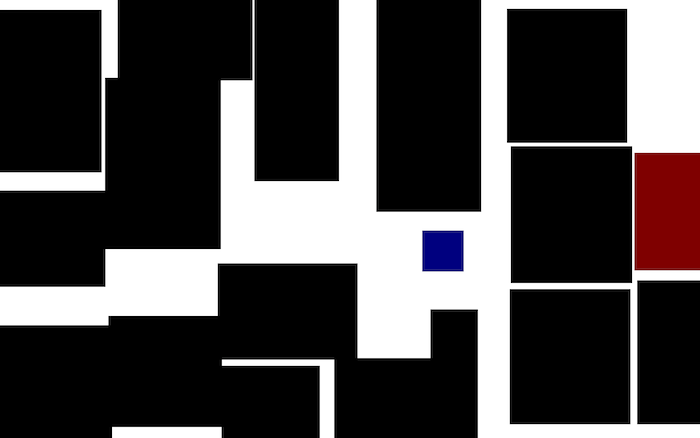
 This is a little music toy I made for PCs and mobile phones.
This is a little music toy I made for PCs and mobile phones.